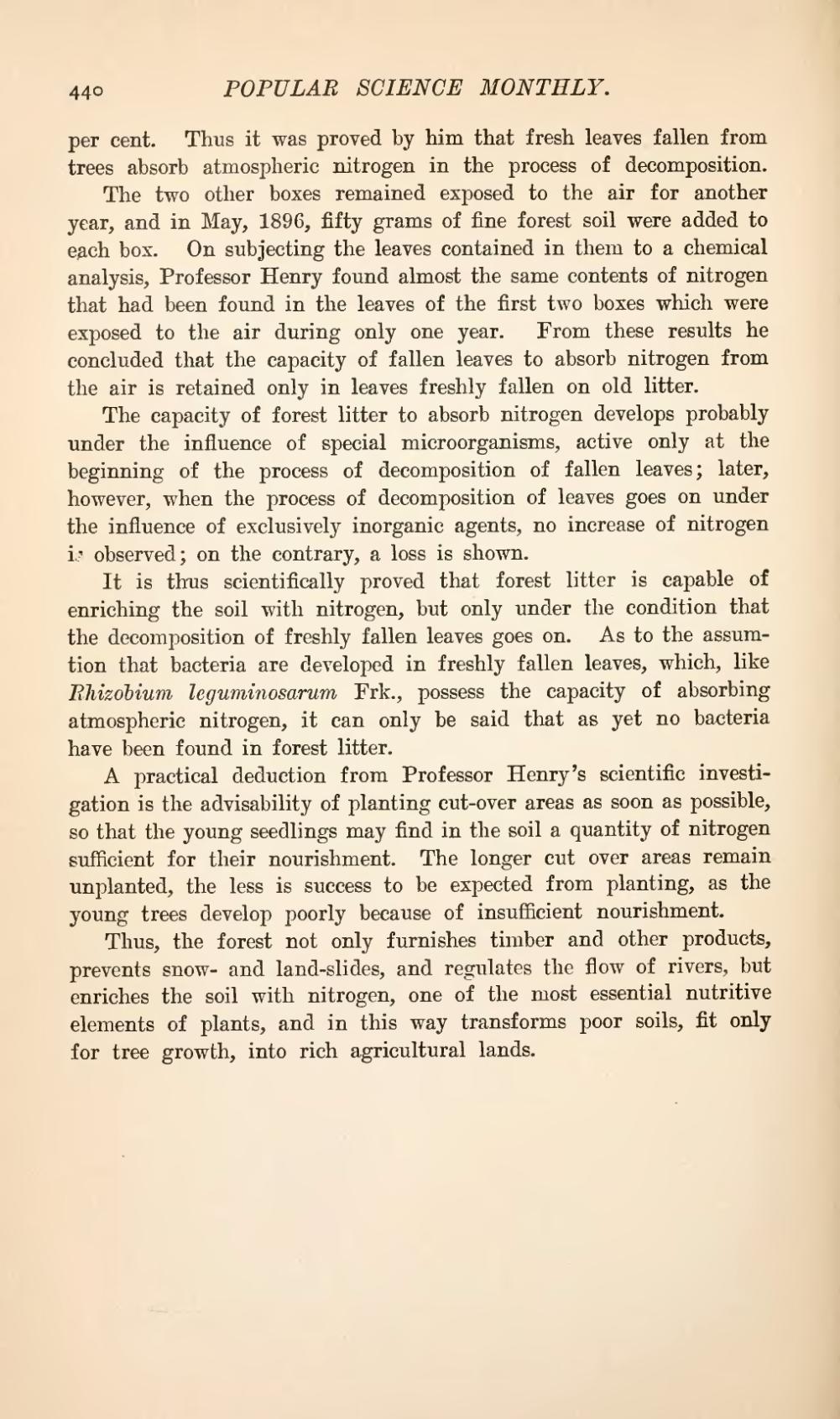per cent. Thus it was proved by him that fresh leaves fallen from trees absorb atmospheric nitrogen in the process of decomposition.
The two other boxes remained exposed to the air for another year, and in May, 1896, fifty grams of fine forest soil were added to each box. On subjecting the leaves contained in them to a chemical analysis, Professor Henry found almost the same contents of nitrogen that had been found in the leaves of the first two boxes which were exposed to the air during only one year. From these results he concluded that the capacity of fallen leaves to absorb nitrogen from the air is retained only in leaves freshly fallen on old litter.
The capacity of forest litter to absorb nitrogen develops probably under the influence of special microorganisms, active only at the beginning of the process of decomposition of fallen leaves; later, however, when the process of decomposition of leaves goes on under the influence of exclusively inorganic agents, no increase of nitrogen i? observed; on the contrary, a loss is shown.
It is thus scientifically proved that forest litter is capable of enriching the soil with nitrogen, but only under the condition that the decomposition of freshly fallen leaves goes on. As to the assumtion that bacteria are developed in freshly fallen leaves, which, like Rhizobium leguminosarum Frk., possess the capacity of absorbing atmospheric nitrogen, it can only be said that as yet no bacteria have been found in forest litter.
A practical deduction from Professor Henry's scientific investigation is the advisability of planting cut-over areas as soon as possible, so that the young seedlings may find in the soil a quantity of nitrogen sufficient for their nourishment. The longer cut over areas remain unplanted, the less is success to be expected from planting, as the young trees develop poorly because of insufficient nourishment.
Thus, the forest not only furnishes timber and other products, prevents snow-and land-slides, and regulates the flow of rivers, but enriches the soil with nitrogen, one of the most essential nutritive elements of plants, and in this way transforms poor soils, fit only for tree growth, into rich agricultural lands.
